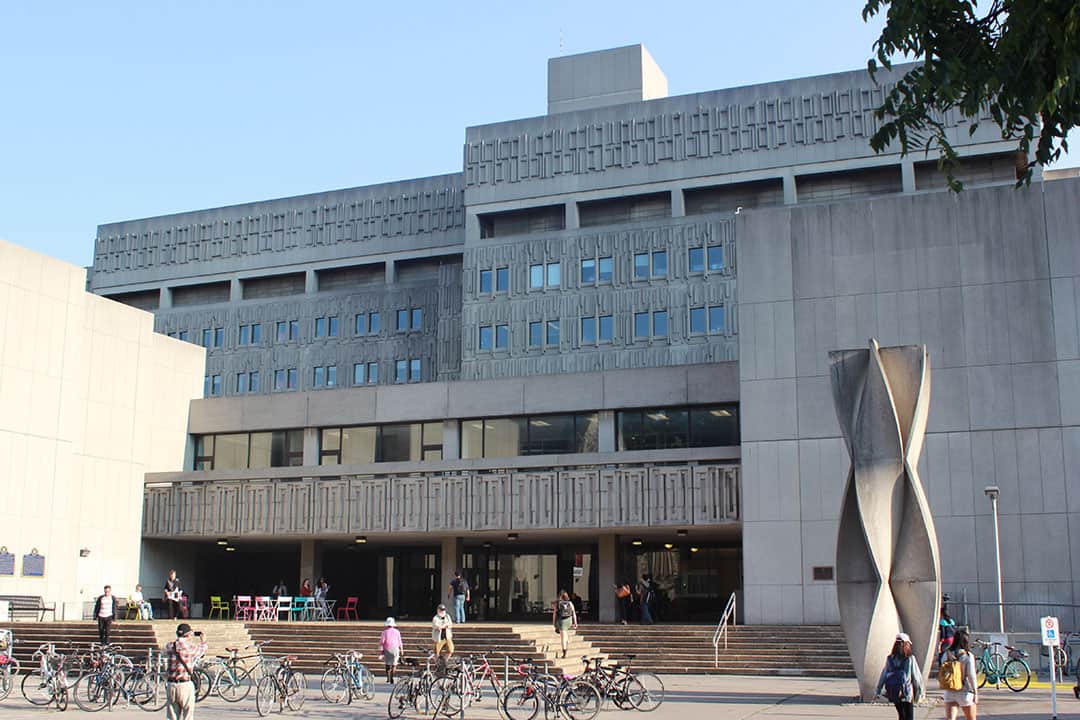A group of students in medicine, nursing, and other health care-related fields at U of T have started a Toronto Student COVID-19 Response Team to help front-line workers fight the COVID-19 pandemic. The initiative offers assistance with child care, grocery shopping, food and coffee delivery, pet-sitting, and running other errands in an effort to alleviate some of the recent pressures that health care providers are facing.
Daniel Lee and Jordi Klein, both U of T medical students, launched the response team by reaching out to classmates to see if they were willing to help.
Lauren Beck, another U of T medical student who serves as a volunteer coordinator and internal communications director for the initiative, described the outpouring of support from fellow students in an email to The Varsity.
“Within an hour there were dozens of responses,” Beck wrote. “All of us helping out are simply people who are trying to help other people through this challenging situation to the best of our abilities.”
Malli Zworth, a nursing student and fellow volunteer coordinator, told The Varsity that “If we were in the same predicament that these health care professionals are in, we would want someone to help us.”
How the response team works
The team is made up of a four-person steering committee, 16 volunteer coordinators, and 416 student volunteers. The student volunteers are in medicine, nursing, dentistry, pharmacy, respiratory therapy, and occupational therapy programs. Volunteers from the Canadian Memorial Chiropractic College and the Canadian College of Naturopathic Medicine are also involved.
Zworth said that the team has been expanded to include students in education programs across the GTA.
Impact on the community
According to Beck, the initiative has been able to arrange more than 100 successful matches between students and health care practitioners, and they’ve already volunteered over 400 hours.
Zworth added that the response from health care practitioners has been overwhelmingly positive. “Every email that I get back when I make a match for a health care worker… starts with, ‘Thank you so much for this initiative. You don’t understand how grateful we are and how helpful this is for us!’”
Zworth also emphasized the power that small actions can have. “Just changing the litter in their cat box, it’s so small and insignificant, but that’s just one thing that they can cross off their list that they don’t have to think about,” Zworth said. “It just makes you realize how a little thing can really go a long way for someone right now.”
According to Beck, more than 200 health care practitioners have filled out the form to request support, mostly in child care. As a result, the response team is actively recruiting more volunteers who are adept at providing child care support.
Ensuring safety while providing services
Beck stressed the importance of volunteers’ safety. She outlined various precautions the team has put in place, “such as asking volunteers to ensure they meet our stringent requirements about symptoms, risk factors and exposure history.”
“We also have a program design in which each student is only paired with one family for the duration of the program so that students are not meeting multiple families and increasing the risk of exposure,” she continued.
She added that students who live with high-risk populations, such as immunocompromised or elderly individuals, and people who have travelled outside Canada in the past 14 days are ineligible to volunteer.
Zworth and Beck’s role as volunteer coordinators also includes regularly checking in with volunteers to ensure that they don’t have any symptoms or new risk factors, and are still comfortable to continue.
For students who are not volunteers, but want to help, both Zworth and Beck highlighted the importance of following social distancing recommendations from public health officials.
“The health care workers going to the hospitals are trying to work for us every single day,” Zworth said. “The least we can do is just stay home and try to help them in that small way.”
Editor’s Note (April 7, 10:07 pm): This article has been updated to clarify the involvement of volunteers studying chiropractic therapy and naturopathy, fixing an editing error.


